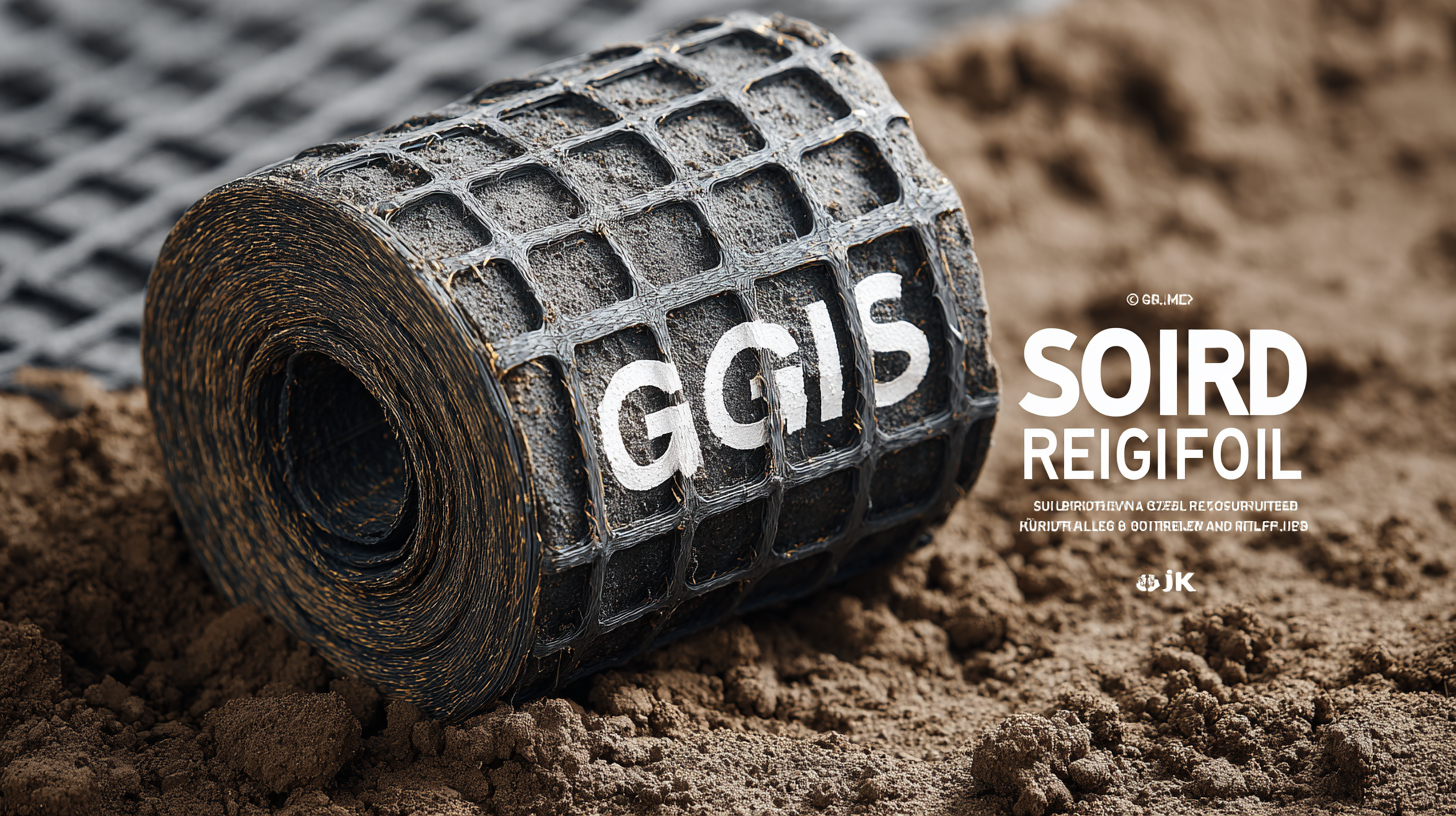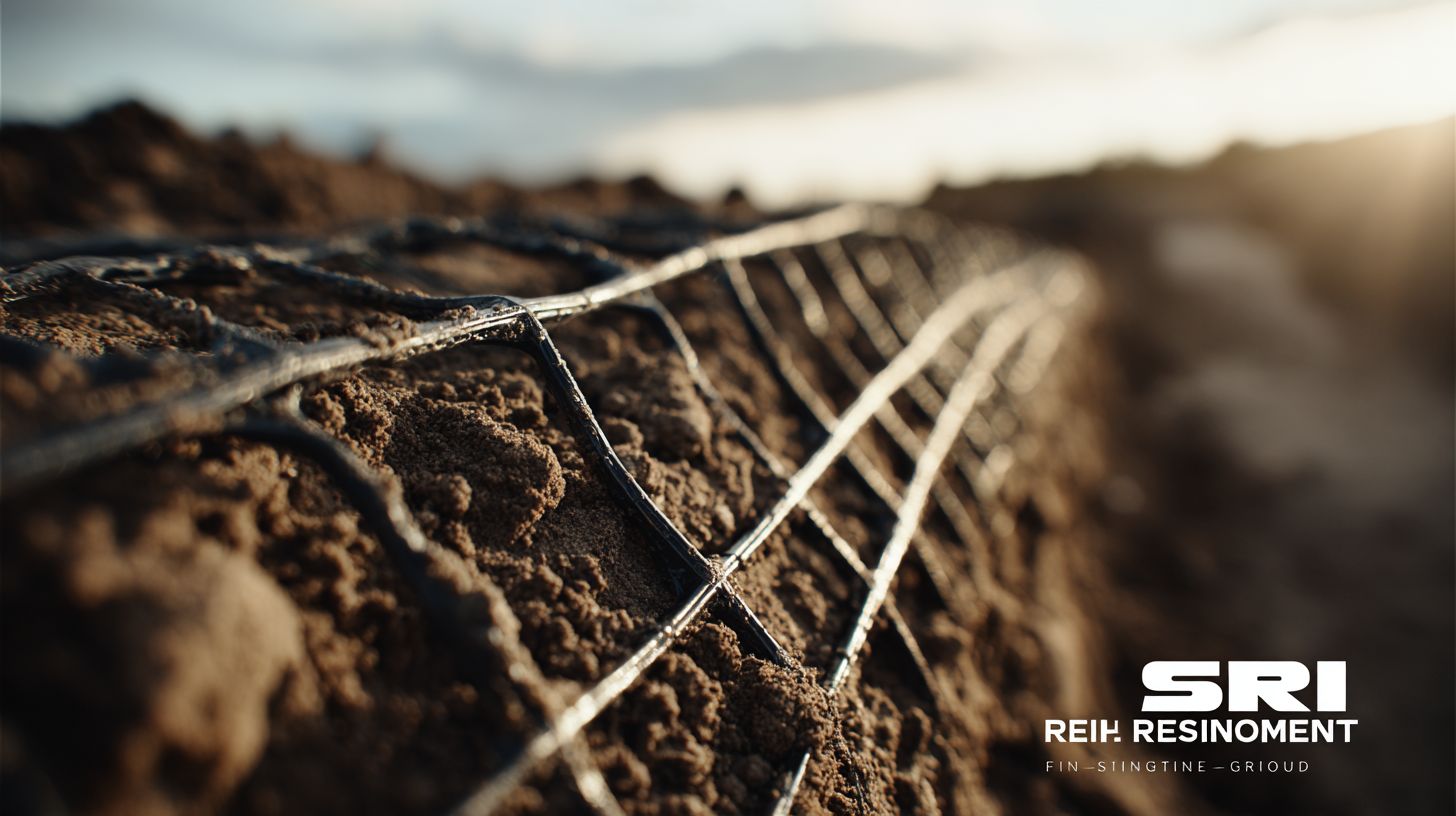Inquiry
Form loading...
- Phone
- E-mail
As the construction industry continues to grapple with the pressing challenges of sustainability and environmental impact, innovative solutions are becoming increasingly essential. A pivotal technology in this evolving landscape is the use of Soil Reinforcement Geogrid, which plays a critical role in enhancing the stability and load-bearing capacity of soil structures. According to the Global Geosynthetics Market Report, the demand for geogrid products is projected to grow at a CAGR of 10.5% from 2020 to 2027, underlining the industry's shift towards more resilient and efficient construction methods. By integrating Soil Reinforcement Geogrid into project planning, engineers can achieve significant improvements in material efficiency and sustainability, ultimately leading to reduced costs and a smaller carbon footprint. This blog will delve into the top strategies for utilizing Soil Reinforcement Geogrid effectively, positioning it as a cornerstone in the future of sustainable construction.

Soil reinforcement plays a pivotal role in sustainable construction practices, as it enhances the stability and load-bearing capacity of soil. By integrating innovative materials like geogrids, construction projects can effectively mitigate land erosion and reduce the need for excessive excavation and filling. This not only leads to a significant reduction in carbon emissions associated with transporting heavy materials but also promotes the efficient use of local resources.
 The use of soil reinforcement technologies allows for the construction of durable structures that withstand environmental pressures while preserving the natural landscape.
The use of soil reinforcement technologies allows for the construction of durable structures that withstand environmental pressures while preserving the natural landscape.
Moreover, soil reinforcement contributes to the longevity of construction projects, minimizing maintenance costs over time. Projects that utilize superior soil reinforcement techniques often exhibit improved resilience against natural disasters, such as landslides and flooding. This resilience is crucial in maintaining safety in urban environments and protecting infrastructure investments.
As the construction industry increasingly prioritizes sustainability, the importance of soil reinforcement will only continue to grow, promoting not only economic benefits but also environmental stewardship and community resilience.
In the quest for sustainable construction, the emergence of innovative technologies in geogrid production stands as a pivotal development. Geogrids, commonly used for soil reinforcement, play a vital role in enhancing the stability and durability of structures. Recent advancements have led to the formulation of composite materials that not only improve the mechanical properties of geogrids but also reduce their environmental impact. By utilizing recycled materials and bio-based polymers, manufacturers are now able to produce geogrids that align with the principles of sustainability.
Additionally, the integration of smart technologies in geogrid design has ushered in a new era of performance efficiency. The incorporation of sensors within geogrids allows for real-time monitoring of soil conditions and structural performance. This proactive approach enables engineers to make data-driven decisions, enhancing overall project safety and longevity. As these emerging technologies continue to evolve, the construction industry is poised to benefit from more resilient infrastructures that meet the growing demand for eco-friendly solutions. The future looks promising as we harness these innovations to pave the way for sustainable building practices.
The landscape of sustainable construction is evolving, driven by key industry standards that are shaping soil reinforcement solutions. As construction projects increasingly prioritize environmental impact, guidelines such as ISO 14001 and LEED certification are becoming fundamental. These standards promote the use of materials and techniques that ensure long-term durability while minimizing resource depletion. Best practices in soil reinforcement, particularly with geogrids, align with these standards by enhancing soil stability and load-bearing capacity, crucial for sustainable infrastructure.

Innovations in geogrid technology also play a vital role in meeting industry standards. Modern geogrids, made from recycled plastics and designed to reduce material usage, support sustainability efforts by optimizing soil retention and reducing erosion. Furthermore, compliance with ASTM D6638 and similar guidelines ensures that the materials used in soil reinforcement solutions meet rigorous performance metrics. This alignment not only fosters responsible construction practices but also enhances project viability, making sustainable construction a more achievable goal for the industry at large.
The use of geogrids in construction projects presents a significant opportunity to enhance environmental sustainability. According to a report by the International Geosynthetics Society, implementing geogrid technology can lead to a reduction in material usage by up to 30%, decreasing the overall carbon footprint of construction sites. This reduction is particularly crucial as the construction industry accounts for nearly 39% of global carbon emissions, primarily from material production and transportation. By reinforcing soil and improving load distribution, geogrids allow for thinner structures and less filler material, resulting in minimized resource consumption.
In addition, the environmental benefits extend to soil erosion prevention and improved water management. The U.S. Environmental Protection Agency has indicated that soil erosion can lead to substantial environmental degradation and loss of topsoil, which can adversely affect agricultural productivity. Geogrids effectively stabilize soil, preventing erosion and promoting natural vegetation. Moreover, their use in retaining walls and slope stabilization can improve water infiltration, reducing surface runoff and the burden on stormwater systems. Such applications not only mitigate ecological impact but also contribute to the resilience of infrastructure against extreme weather events, ultimately fostering sustainable development in our communities.
The construction industry is evolving with a pressing need for sustainable practices, particularly in soil stabilization methods. According to a report by the Global Geosynthetics Market, the demand for soil reinforcement geogrids is expected to grow by approximately 9% annually over the next five years. This significant growth underscores the increasing emphasis on environmentally friendly construction materials that enhance soil stability and reduce the risk of erosion, landslides, and other geotechnical issues.
Innovations in soil stabilization are leading the way in sustainable construction. Enhanced geogrid technologies, such as those integrated with recycled materials, not only improve soil strength but also minimize carbon footprints. A study by the American Society of Civil Engineers revealed that using geogrids in road construction can reduce the amount of raw material needed by up to 30%, translating into significant resource savings and lower environmental impact. Furthermore, modern geogrids are designed to be lighter and easier to install, further cutting down energy consumption and labor costs on construction sites. These advancements are redefining industry standards and aligning with global sustainability goals.
